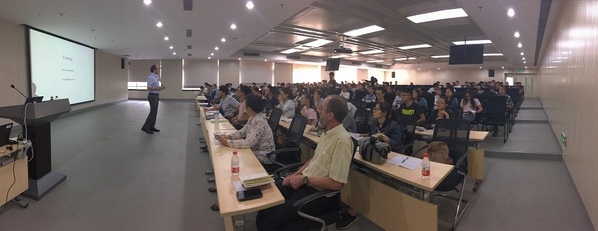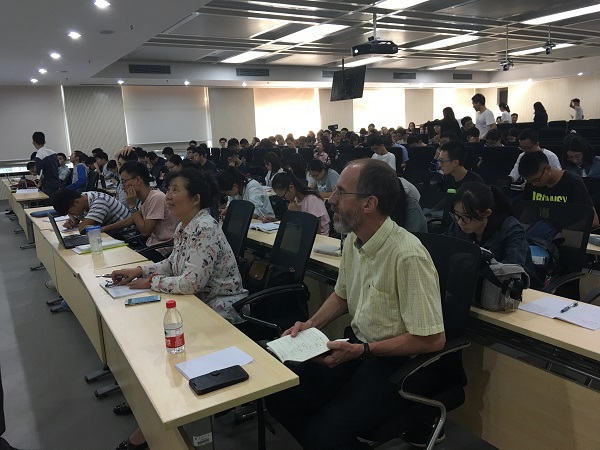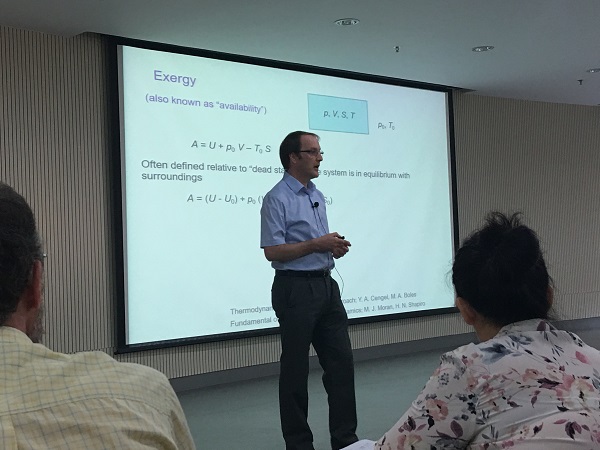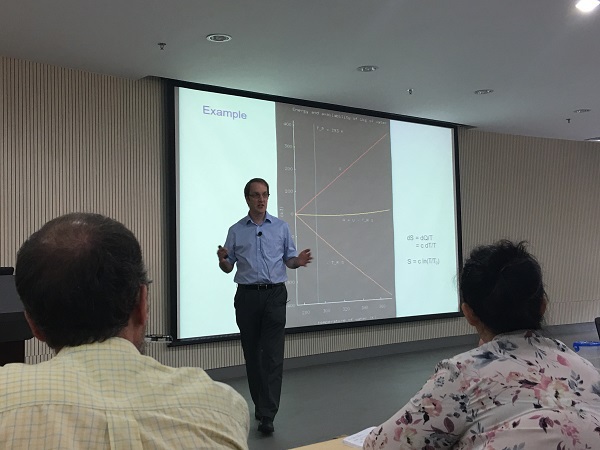On the afternoon of October 24, 2017, Professor Neil Greenham conducted the second lecture of the series in Room N308A, State Key Laboratory of Optoelectronic Devices in South China University of Technology. At this lecture, Professor Greenham focused on exergy. Students majoring in materials, graduate students in the Laboratory and teachers attended the lecture.

At 3:00 p.m., Professor Greenham began the lecture with an open-ended question “Which kind of system storing about 1 KWh of energy would you pay the most money for?” Different students had different answers, but most students chose “1/7 litre of petrol”. After a short discussion, Professor Greenham introduced the concept of “exergy” which is defined as the maximum work done by a certain form of energy in a certain environment. Besides, by using an example of one kilogram of water, Professor Greenham helped students understand this concept better.

Next, Professor Greenham talked about how the working principle of heat engine and its efficiency. Carnot engine is the most efficient reversible engine, therefore, its operating principle is widely used in the production of heating pumps and refrigerators. Professor Greenham selected several heat pumps with high coefficient of performance and made a comparison among them, from which students clearly felt the importance of improving the efficiency of heat engine for environmental protection.
After a short break, Professor Greenham spoke in detail about the sun, the largest heat source in the solar system. In order to make full use of solar energy, people designed many solar concentrators. Professor Greenham showed us some photos of large solar panels systems that amazed us so much.

Besides heat engine and heat source, Professor Greenham introduced us a new content —“Hydrogen, Electrochemistry and Batteries”. For transport fuels, batteries are more efficient than hydrogen and petrol. Professor Greenham taught us a lot of electrochemistry knowledge. At the meantime, he listed several commonly used batteries for further explanation, such as lead-acid batteries, nickel-cadmium cells, lithium-ion batteries, etc.

At around 5:00 p.m., the lecture came to an end. Students and teachers applauded warmly to thank Professor Greenham for his wonderful lecture. Through the study of this section, students have expanded their knowledge and broadened their horizon.
(Text by Zhang Yu, Photo by ISAM)

